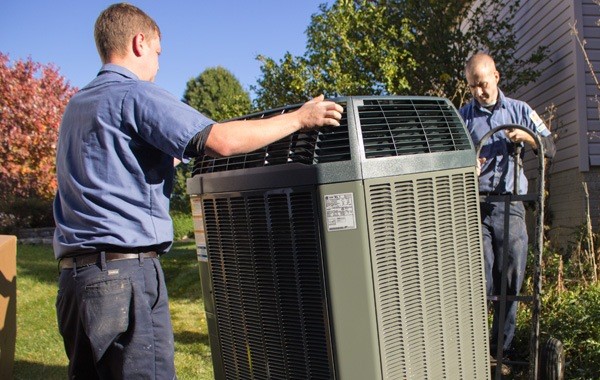An in-depth air conditioner installation process guide. Learn how installation procedures dramatically affect the lifespan and effectiveness of your air conditioner. I’m not going to lie, the installation process for a new air conditioner is complicated. When customers ask me what’s involved in the process, they’re often shocked to learn how much goes into it.
Central Air Conditioning Installation
The world has changed so much in just the past few years. So, imagine how much has changed in 10 years. Or 20. Or 30. Most existing air conditioners that are replaced today are between the ages of eight to 30 years old.
Modern air conditioners are 20-50% larger in height, length, and width. This allows for a larger coil which, in turn, makes the air conditioner more efficient. Because of the larger size of modern air conditioners, the current location of your existing air conditioner may not accommodate the new one. Sometimes the air conditioner must be relocated, particularly if there are state or manufacturer regulations on space clearances surrounding your unit. Others require that unit to be within a certain distance to the utility meter. In some cases, this creates additional costs.
This is the first consideration for a homeowner, because it may require moving equipment or modifying your home’s ductwork. So, what’s the good news? Modern air conditioners are significantly quieter and more efficient than their predecessors, so your costs are often offset by these benefits.
Collecting A/C Information During the Home Estimate
During your initial in-home visit, the estimator has the responsibility of reviewing the existing air conditioning system. Important information needs to be collected so they can provide you with an accurate proposal. This information is then passed to the installation team.
Depending on the job, specialized equipment may be needed, which the installation team can bring with them because of this step. Having the proper information before the day of installation increases the chances of the job being completed successfully and promptly.
Installation team
Before your installation team arrives, you should receive a call or text letting you know they’re on their way.
Many good HVAC Companies will also send pictures accompanied by bios of the installation team that will be working at your home ahead of time. This is an additional safety and comfort factor before a stranger enters your home.
Once they arrive, the lead installer will share and review the job information with you. This is often included in a packet that includes details of the job. This packet contains the equipment information, accessories to be installed, and any special instructions given by you to the estimator before the sale.
It’s important to allow a few moments for this review. This will prevent costly and aggravating mistakes from happening during the installation. Communication is a key component to a successful installation.
While you are reviewing the job details with the lead installer, the other member(s) on the team will use this time to start laying down floor protection and getting tools and equipment in place. They will also start a safety process that includes turning off electrical circuits and gas supply to the existing HVAC equipment.
Continued on part two
Contact Us
If you do experience any emergency issues with your A/C system, you can always give us a call. If you have an upcoming HVAC project, join hands with a licensed and insured contractor at East Coast Mechanical. Email: ecmcecmc@aol.com Address: 5133 W Hurley Pond Rd Suite A, Wall Township, NJ 07727 Hours: Monday to Friday 8 AM to 5 PM and Closed Saturday and Sunday.

